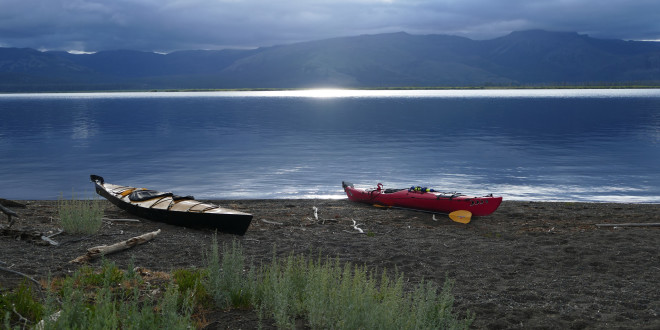The new robot exploring Yellowstone Lake has turned up some new, surprising findings regarding the lake’s hydrothermal vents.
According to the Billings Gazette, the power surprised even the most seasoned geophysicts who have been pondering the lake for decades:
“We often measured 100 watts per meter squared, which is ginormous,” said Rob Sohn, a geophysicist at Woods Hole Oceanographic Institution who is leading the three-year, $5 million Hydrothermal Dynamics of Yellowstone Lake study. “The highest before was 16 watts, which was considered ginormous at the time.”
Sohn said that if he calculated the heat from the vents near Stevenson Island it would be somewhat equal to a “typical” geothermal power plant, which produces about 4 megawatts.
The measurements gathered were so high compared to the past that the crew wondered if they were faulty, he said. But it’s more likely that the technology deployed by the HD-YLAKE researchers is better and so well positioned that the values are just more accurate, Sohn said.
“We hope to understand the plumbing of this vent field, by the flow paths of water, how fast the water is moving and how much heat the water is carrying,” said Rob Harris, a geophysicist at Oregon State University involved in the study.
[…]
The last time measurements were taken in Yellowstone Lake was about 40 years ago. At that time, scientists didn’t have the detailed mapping of the lake floor like this year’s researchers could access. By precisely knowing where hot vents were located on the lake bottom, the HD-YLAKE crew could guide a remote vehicle into position to insert a temperature probe to measure heat flow.
The highest temperature recorded was around 340 to 350 degrees.
“This is advective heat flow, but we don’t know how large those values are because we don’t know the discharge rate — just the temperature,” Sohn explained.
The crew also took measurements of the lake floor’s conductive heat flow by inserting a meter-long probe into the lake bed, away from hot vents
“In a matter of 10 to 20 minutes we could get a new value,” by quickly moving to the next area, Sohn said. That’s why the crew collected 62 measurements, instead of eight as originally planned.
This isn’t the first robot deployed to explore Yellowstone Lake; the first was built in 1985. Earlier this year, we reported that the new robot had met its Kickstarter goal under the wire.
In addition to collecting information on the amount of heat, the HD-YLAKE crew is taking core samples from the bottom of Yellowstone Lake to collect sediment samples. From the Gazette:
The scientists cooperating on the project have different aims. Cathy Whitlock, a professor of earth sciences at Montana State University, is hoping to find evidence of what happened before and after the explosions.
“This project is so cool because we’re focusing in on these explosions, how often have we had these catastrophic events, and what were their impacts,” she said.
“Maybe we can find evidence of what happened before and after lake explosions to see how they affect the ecosystem.”
The deepest of the eight cores measured more than 37 feet, much deeper than any previous cores taken from the lake, which topped out at about 24 feet.
“That means we have the last 15,000 years” of sediments, Whitlock said, back to the end of the last ice age.
In January the cores, which are being stored in a University of Minnesota lab, will be opened for sampling. Whitlock will be looking for charcoal from forest fires, pollen that could explain what plants were around before and after an eruption, as well as the remains of any animal and plant life that may have been killed. The cores will also be photographed, analyzed for chemical composition and samples of gases within the cores will be taken.
“With these cores … the HD-YLAKE team can get a better understanding of how the lake’s hydrothermal system has responded to geological events, including earthquakes, volcanic activity, and changing climate…” Chris Linder wrote on the team’s blog.
The crews have already laid out plans for next year’s research, which will include placing 10 seismometers around the lake. Overall, morale is good, despite long hours.
 Yellowstone Insider Your Complete Guide to America's First National Park
Yellowstone Insider Your Complete Guide to America's First National Park





